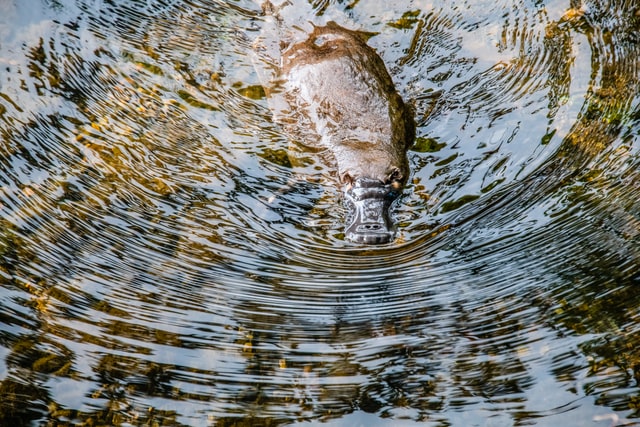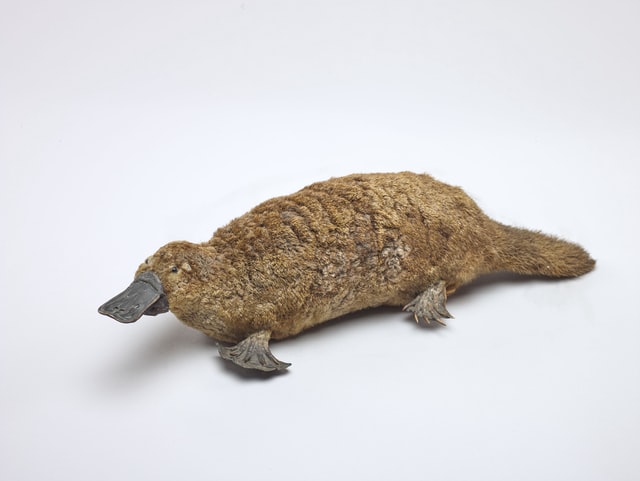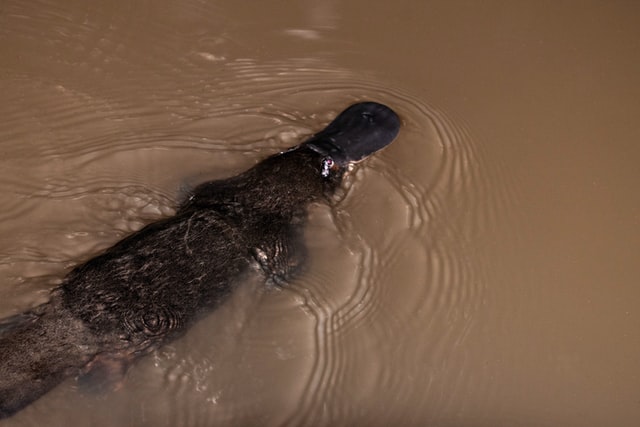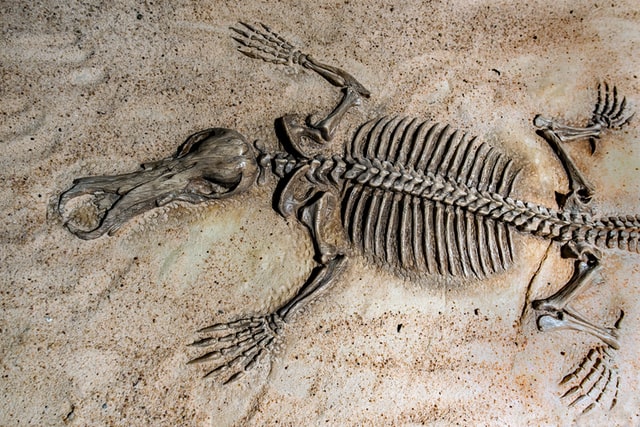A narrative for a species facing extinction in the anthropocence.

The duck-billed platypus is a creature whose perplexing anatomy and fascinating history has aroused debate among human understanding of the entities living among us. This unique being is one that has chosen to exist primarily in solitude. The platypus refuses to be fully known and resists conformity to scientific standards, thus, their character reminds us that any underlying presumptions we hold about nature are more like pathways that lead to deeper mysteries about its complexity.
The story of the platypus serves as a reminder of the need to be humble in our understanding of other organisms and nature itself. Fossil records give insight into the 122-million-year evolution of this complex animal; its existence defies human comprehension, and the platypus seems to prefer it be that way.
Being only one of two monotremes, which are mammals who lay eggs, platypodes display aspects from reptilian, mammalian, and even avian biology. They are the sole extant representatives of their family and genus, although several of their relatives have been found in the fossil record. Its initially discovery was thought to be a hoax, but when it was concluded that the platypus was indeed authentic, further investigation found that it would not be easily tied down to any existing category. The character of the platypus has taught humanity that nature is full of surprises, and our understanding of it is not essential to its being.

This old soul has been slow and careful to evolve. Its intelligence is where its strength and resilience lies, and while other organisms may evolve quick in order to cope with environmental change, the platypus has held onto many of the characteristics of its ancient links. It’s as if it took the best of each of its many forms, and has now come to be a medley of species such as ducks, beavers, birds, otters, and snakes.
Since most of their time is spent underwater or in burrows, it has been difficult to determine much about the life of platypodes. These introverted beings are both nocturnal and crepuscular; they are most active during dusk and nighttime hours, but may also be seen during the day when the sky is overcast, maybe enjoying the aesthetic pleasure of the afterglow. Their shy and independent personality is evident in their daily behavior, in which they spend around 12 hours swimming and searching for food alone.
The secretive lifestyle of platypodes has hampered human understanding of their population dynamics and social and family structures. What we do know about their love lives is mostly observed under captivity. The romantic nature of male and female platypuses usually begins in the wintertime, where they have been seen engaging in flirtatious aquatic activities such as rolling sideways together or touching in passing. The male has also been observed to grasp a female’s tail with its bill to gain her attention. The platypus is not won over easy, and while teasing can last less than a minute up to half an hour, it is typically repeated over several days before the two take the relationship to the next level. Once they are courted, males and females split off into their independent responsibilities.
The complex role of the mother is yet another uncanny feature of this species’ mammal-reptile reputation. Already strange enough being a mammal that lays eggs, mothers lack nipples, so instead of the ordinary suckling that most mammals engage in, young platypodes feed on milk that the mother secretes onto her abdominal skin. Females typically lay 2-3 eggs, and after they hatch, children are nursed for 3-4 months in separate ‘maternal’ burrows. Meanwhile, males have little to do with offspring. Their defining characteristic is the venomous spurs on their hind feet, another extremely unlikely feature of mammals. They usually use the poison when threatened by a predator, but sometimes it’s used during breeding season when scaring away mating rivals. The venom’s composition has been found to be a cocktail of 19 different substances that males have been collecting throughout their evolutionary course.
The half land, half aquatic lifestyles of platypodes contribute to the myriad of unprecedented features that distinguish them as biological anomalies. The name platypus comes from the Greek language for flat foot, which explains why they are so awkward when it comes to land life. Their limbs are short, heavy and spread out away from the body. A platypus uses almost 30% more energy when moving on land, compared to terrestrial mammals of similar sizes, so their aquatic habitats are essential to their strength. Endemic to Australia, their habitat requirements include freshwater basins and plenty of burrows for nursing young and acquiring food. Their key function in an ecosystem is playing the typical role of the carnivore, where they regulate the populations of benthic zone species. The teeth they lack are substituted by gravel that ends up mixed in with their food which they use to mash everything up. When discovered, the bill of the platypus was thought to be a sewn attachment, but it turned out to be their own form of technology. Since they close their eyes underwater, the bill’s sensitivity to electric fields locate electric currents made by prey’s small muscle movements. Platypuses can consume their entire body weight in food within just a 24-
hour period, so they depend on a healthy ecosystem that allows them to maintain their dietary needs.

The platypodes’ position in the world as an outsider may be what has kept them safe and allowed them to evolve into the complex wonders they are today, but now their hideaways are being compromised. Since the platypus is highly dependent on a freshwater environment, its largest threats come from habitat destruction, waterway pollution, and land clearing. Successive
droughts and extraction of water for agriculture, domestic, and industrial supplies contribute to this issue and simultaneously, threats from climate change increases the flooding of their homes. Although still relatively common in the wild, platypuses were recently reclassified as vulnerable because of their reliance on an environment that is under stress from anthropogenic
destruction.

As nature becomes less complex and as biodiversity decreases, we are losing Nature’s most fascinating organisms. Even though the platypus has survived past mass extinctions, without a proper home, its survival among human life may not be secured. The platypus, a walking/swimming paradigm, is unwilling to fit into standard categories of classification. For humans, the platypus has been characterized as a misfit, but its evolutionary success proves it to be quite the contrary. It has found a way to fit into each new coming world, but now its task is to find a way to fit in the world of humans. Now is a crucial time where we must decide whether we want to use Earth’s space for the construction of new development, or the preservation of nature’s greatest wonders.
